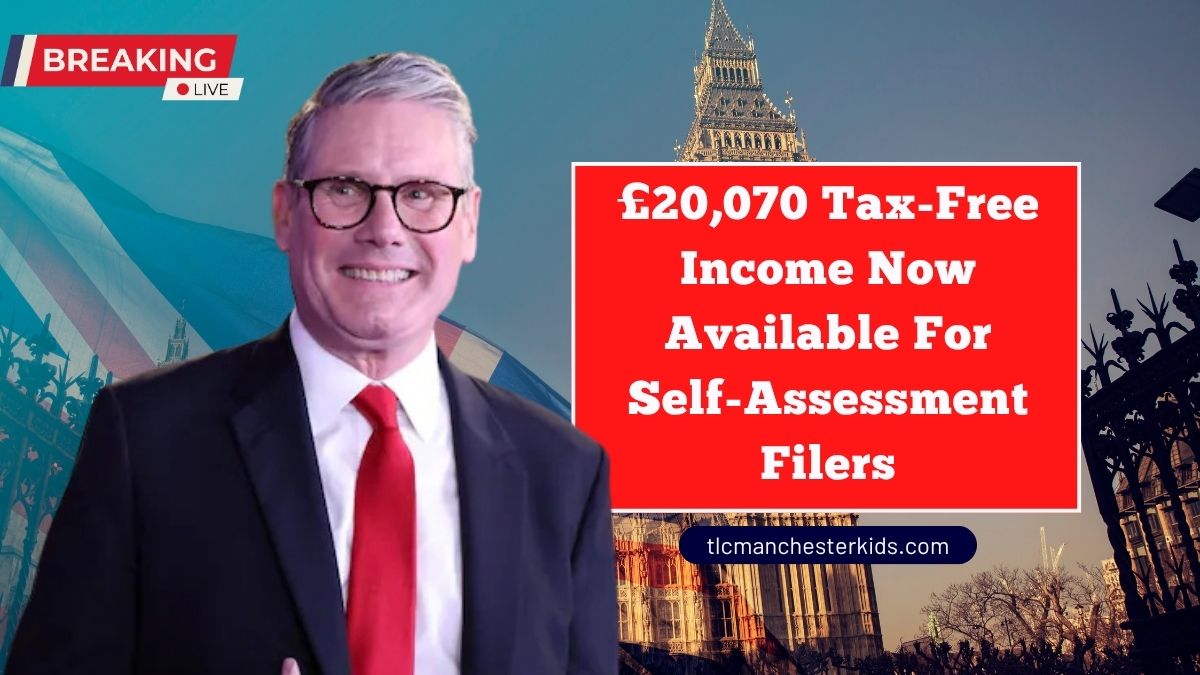HMRC has announced a significant update for self-assessment taxpayers in the UK. Eligible households can now claim a tax-free personal allowance of up to £20,070, a substantial increase from the standard threshold of £12,570.
This tax benefit is made possible by combining the standard Personal Allowance with the Rent-a-Room Scheme, offering households an opportunity to legally reduce their tax burden in the current inflationary climate.
Understanding the Updated Tax-Free Threshold
For years, the Personal Allowance has remained frozen at £12,570, and it’s expected to remain so until at least 2028. As a result, many taxpayers are being pushed into higher tax brackets due to wage growth and inflation—a phenomenon known as fiscal drag.
However, self-assessment taxpayers can now increase their tax-free earnings to £20,070 under specific conditions by utilizing the Rent-a-Room Scheme.
How the £20,070 Tax-Free Allowance Is Calculated
The enhanced allowance combines:
- Standard Personal Allowance: £12,570
- Rent-a-Room Relief: £7,500
- Total Tax-Free Income: £20,070
To benefit from this, you must declare the income through a self-assessment tax return and meet the eligibility criteria of the Rent-a-Room scheme.
Key Conditions for Claiming Rent-a-Room Relief
To qualify for the £7,500 tax-free rental income, here are the main criteria:
- The room must be in your main residence (you must live in the property).
- The space must be let furnished.
- You must declare the income via self-assessment.
- You can opt into the scheme automatically if you earn under the threshold.
If your rent-a-room income is under £7,500 a year (approximately £625 per month), you won’t owe any tax on it. If you earn above the threshold, you must choose between paying tax on the full amount or opting into the scheme and only paying on the excess above £7,500.
When Opting Out May Make Sense
While the scheme is designed to provide relief, in rare cases, it may be more beneficial to opt out. For example, if you’ve incurred large expenses or losses from letting the room (such as repairs or refurbishments), you might prefer to offset the loss against income from another rental property.
In such cases, having the rent income taxed as part of normal property income may yield better overall tax results.
Income Tax Bands Remain Unchanged
| Band | Taxable Income | Tax Rate |
|---|---|---|
| Personal Allowance | Up to £12,570 | 0% (Tax-Free) |
| Basic Rate | £12,571 – £50,270 | 20% |
| Higher Rate | £50,271 – £125,140 | 40% |
| Additional Rate | Over £125,140 | 45% |
With inflation and frozen tax thresholds, more earners are falling into higher tax brackets, making the Rent-a-Room Scheme an effective tool for shielding more income from taxation.
What You Need to Do
To benefit from the full £20,070 tax-free allowance, you must:
- Submit a self-assessment tax return.
- Declare rent-a-room income up to £7,500 (if applicable).
- Ensure you are letting a room in your main residence.
- Maintain accurate records for HMRC in case of a review.
The new allowance is a welcome relief for self-assessment taxpayers looking to maximize tax-free earnings. With living costs rising and tax bands frozen, utilizing schemes like Rent-a-Room can offer legitimate financial advantages.
By combining the standard Personal Allowance and tax-free rental income, households can now earn up to £20,070 without paying a penny in income tax—provided they follow the proper guidelines and declare their income responsibly.
FAQs
What is the new tax-free personal allowance for self-assessment taxpayers?
Eligible households can now legally earn up to £20,070 tax-free by combining the £12,570 Personal Allowance and £7,500 Rent-a-Room relief.
Who qualifies for the Rent-a-Room Scheme?
You must be renting a furnished room in your main residence and declare the income through self-assessment to qualify.
Can I opt out of the Rent-a-Room Scheme?
Yes, you can opt out, especially if you incur losses and prefer to offset those against other rental income in your tax return.
